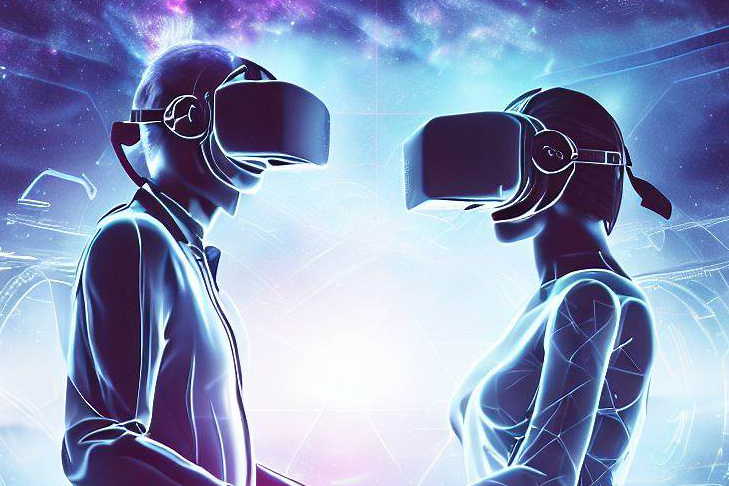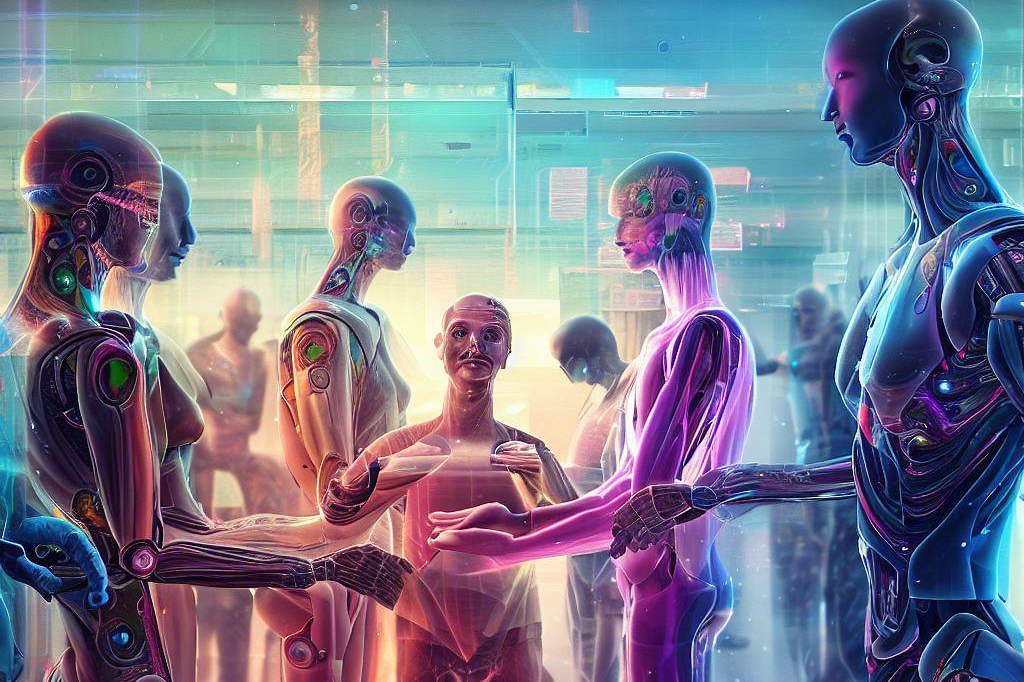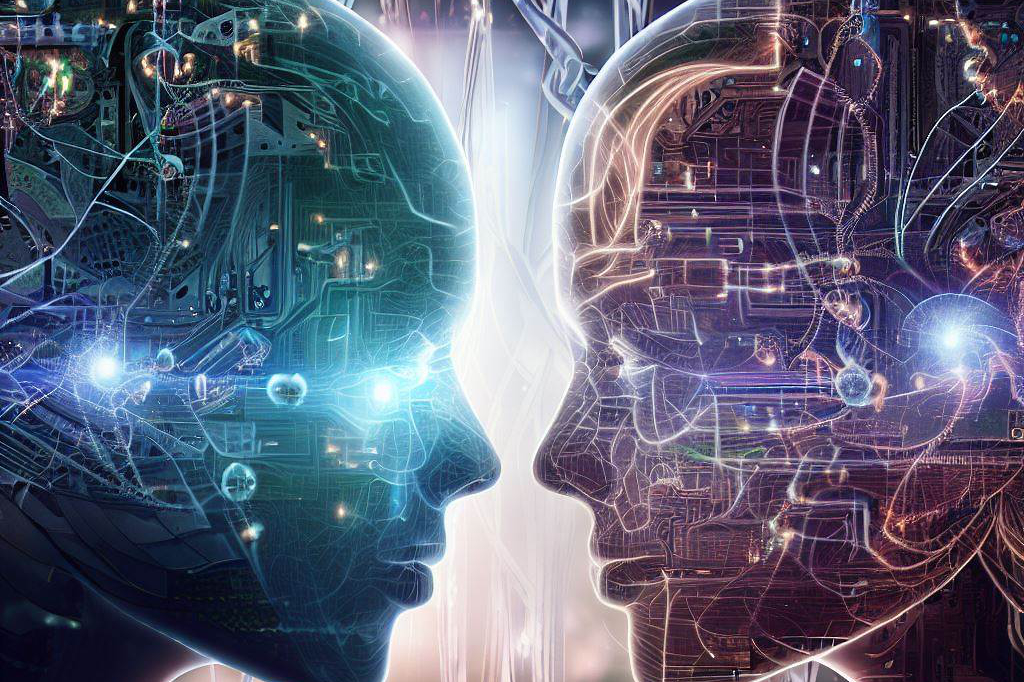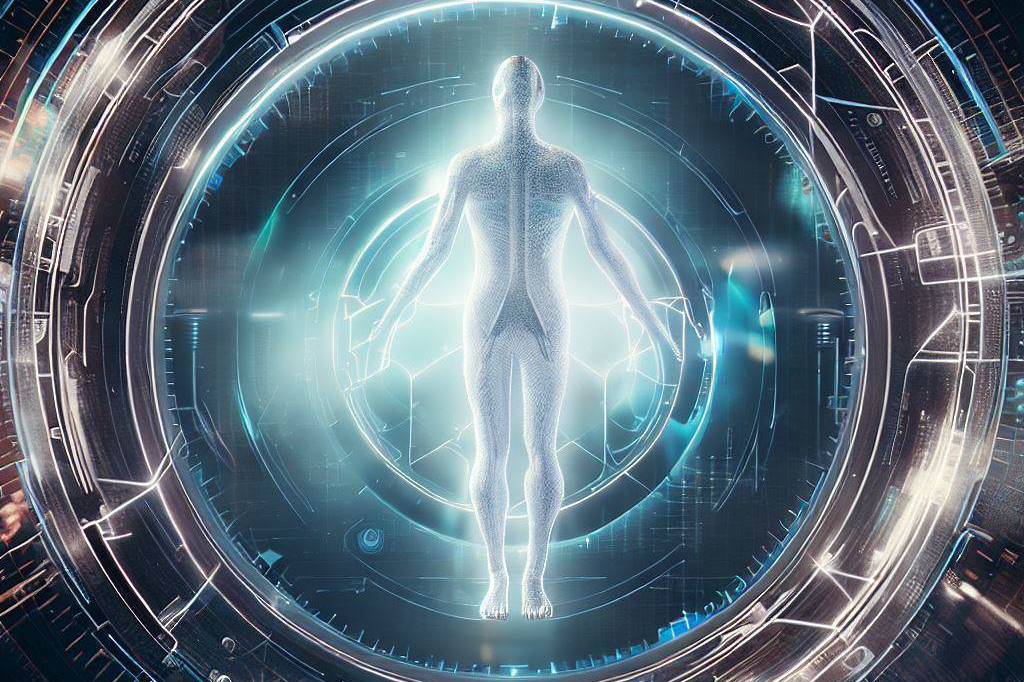As technology continues to advance at an exponential rate, it is becoming increasingly clear that humans are on the brink of a new era in our evolution. Transhumanism is an ideology and movement that advocates for the use of technology to enhance human capabilities beyond what is currently possible through natural means. The aim of transhumanism is to ultimately create a post-human species that will be capable of feats previously thought impossible.
We will explore how transhumanism will impact human relationships in the future, both positively and negatively. We will examine how augmentation and life extension technologies will transform love, intimacy, and community building.
Definition of Transhumanism

Transhumanism is an ideology that aims to use science and technology to enhance human abilities beyond what nature has allowed us. This includes physical enhancements such as bionic limbs or enhanced senses, cognitive enhancements such as brain implants or memory upgrades, and even life extension technologies that aim to increase our lifespans indefinitely. Transhumanists believe that humanity has reached a point where we can no longer rely on natural evolution to solve our problems or improve our lives.
Instead, they advocate taking control of our own evolution using science and technology. While some may view transhumanism as a radical or even dangerous ideology, many experts believe that its principles could have immense benefits for society if implemented correctly.
Explanation of how Transhumanism will impact human relationships
The impact of transhumanism on human relationships cannot be understated. As we gain more control over our own biology through augmentation and life extension technologies, the way we interact with each other will fundamentally change.
For example, imagine being able to wirelessly connect your mind directly with another person’s mind without any physical contact. This could greatly enhance communication, empathy, and intimacy between individuals.
Alternatively, imagine being able to upload your consciousness into a digital realm where you could interact with other digital beings or even create entirely new forms of life. These are just a couple of examples of how transhumanism could transform human relationships in the future.
However, as exciting as these possibilities may be, there are also potential downsides and ethical considerations that must be addressed.
Augmentation and Human Relationships
The Changing Interaction of Humans with Augmentation

As technology advances, many are beginning to embrace the concept of augmentation, whether it be through enhanced physical abilities or cognitive enhancement. As we continue to push the boundaries of what is possible through technology, it is important to consider how these advancements will impact our relationships with others.
One potential change in human interaction could be the way we communicate. With the advent of augmented reality, we may see an increase in nonverbal communication as people utilize hand gestures and facial expressions to convey meaning in virtual environments.
This shift could also lead to a decreased emphasis on verbal communication altogether. Another potential change could be seen in the way people perceive one another.
As individuals embrace their augmented selves, traditional notions of attractiveness or desirability may become less relevant. Instead, people may begin to value traits such as intelligence or technological proficiency at a higher level.
Examples of Technology’s Impact on Human Relationships
Technology has already had a significant impact on human relationships, and this impact is likely to continue as new technologies emerge and become more widespread. Social media platforms have connected people across vast distances while also changing the dynamics of how we interact with one another. One example of this can be seen in online dating platforms, which have changed the way people form romantic relationships.
Rather than relying solely on chance encounters or introductions from friends, individuals can now use algorithms to find compatible partners based on shared interests and values. Social media has also created new types of relationships, such as influencer-follower dynamics, where individuals forge connections based around shared interests and admiration for those who are perceived as experts or role models in a particular field.
The Potential for Augmented Reality to Enhance Social Interactions

One potential application for augmented reality is enhancing social interactions between individuals or groups. By providing additional information or visual cues, augmented reality could help facilitate conversations and interactions in novel ways.
For example, individuals could use augmented reality to learn more about one another’s interests or backgrounds by overlaying digital information over the physical world. This technology could also be used to create shared virtual environments where people can interact regardless of their physical locations.
Overall, while the potential impact of augmentation on human relationships may seem daunting, it is important to remember that as a society we have always adapted and evolved with new technologies. The key will be ensuring that these advancements are used in ways that enrich our lives and strengthen our connections with one another.
Life Extension and Human Relationships
The Potential Impact of Life Extension Technologies on Human Relationships
One of the most profound impacts that life extension technologies are likely to have on human relationships is their potential to extend the length of time that people spend together. Currently, many relationships end due to death or other health-related issues.
If people live longer, they may be able to spend more time with their loved ones and form deeper bonds over a longer period of time. Another impact of life extension technologies on human relationships is likely to be a shift in generational dynamics.
For example, if individuals are able to live for hundreds or even thousands of years, then traditional concepts of age and generational gaps may no longer apply. Older individuals may continue to participate in the workforce or have children far later in life than is currently common, which could lead to significant changes in social norms and expectations.
The Potential for Longer Lifespans To Change The Way Humans Form and Maintain Relationships

Extended lifespans may also change how humans form and maintain relationships. For example, people may become more hesitant to commit themselves to long-term partnerships if they know that they will have many more opportunities for new experiences over their lifetime. Conversely, some individuals may seek out deeper connections with others as a way of forming lasting bonds that can last centuries rather than decades.
Moreover, extended lifespans could result in individuals developing a greater sense of responsibility towards future generations as well as an increased awareness of the importance of preserving social connections across generations. If people expect to be around for much longer periods than they currently do, then there will likely be a greater emphasis placed on passing down knowledge, traditions, and cultural practices from one generation to another.
Ethical Considerations Surrounding Life Extension
As with any transformative technology, there are ethical considerations surrounding life extension technologies that must be taken into account. Some individuals may argue that life extension technologies are an unnatural interference with the natural cycle of life and death, or that they could exacerbate existing social inequalities by only being available to those who can afford them. Additionally, there may be concerns about overpopulation and the strain that long lifespans could place on already limited resources.
Furthermore, extending lifespans indefinitely could also raise serious questions about how people should spend their time and resources over a lifetime that is no longer finite. For example, would individuals be expected to work for centuries in order to support themselves?
What kind of impact would this have on the economy and social structures? These are complex questions that will need to be addressed as we move towards a future in which life extension technologies become increasingly commonplace.
The Future of Love and Intimacy

In a world where technology is advancing at an unprecedented pace, it is only natural to wonder what impact this will have on romantic relationships. From online dating to virtual reality, technology has already changed the way people form and maintain relationships. However, with the advent of transhumanism, these changes are likely to become even more pronounced.
Exploration of how technology will impact romantic relationships
Technology has already transformed the way people meet and interact with each other. Online dating apps have made it easier than ever for people to connect with potential partners, regardless of geography or background.
With augmented reality and virtual reality technologies becoming more sophisticated by the day, it is possible that in the future people may be able to experience romantic interactions in completely immersive environments. However, there are also concerns that technology may have a negative impact on romantic relationships.
For example, research has shown that excessive use of social media can lead to feelings of jealousy and mistrust among partners. As technology continues to advance, it will be important for individuals and society as a whole to consider both the benefits and drawbacks of these innovations.
The potential for virtual reality to enhance intimacy between partners
One area where technology may offer significant benefits for romantic relationships is through the use of virtual reality (VR). VR allows users to experience fully immersive environments that can simulate real-world experiences in vivid detail.
This could allow couples who are physically separated by distance or other factors to feel as though they are together in the same room. There are also potential applications for VR in enhancing intimacy between partners.
For example, couples could use VR simulations as a way to experiment with new sexual experiences or explore their fantasies in a safe and controlled environment. However, as with any new technology, there will be ethical considerations surrounding its use in this context.
Ethical considerations surrounding love and intimacy in a technologically advanced world
As technology continues to advance, there will be new ethical considerations surrounding love and intimacy. For example, the use of AI-powered sex robots could raise questions about consent and objectification.
Similarly, the use of VR simulations for sexual purposes could blur the line between fantasy and reality in potentially harmful ways. It will be important for society to have open and honest discussions about these issues as they arise.
As with any new technology, there will be both potential benefits and drawbacks to its use in the context of romantic relationships. By engaging in thoughtful dialogue, we can work towards ensuring that technology is used in a way that enhances rather than detracts from our ability to form meaningful connections with one another.
Community Building in a Transhumanist World
Difference between Traditional and Transhumanist Communities

Transhumanism has the potential to change the way humans form and maintain communities. While traditional communities are often based on geography, religion, or culture, transhumanist communities may be formed around shared interests in technology or enhancement.
This shift from geography-based to interest-based communities may allow individuals to connect with others who share their values and goals, regardless of physical location. Furthermore, transhumanist communities may also differ from traditional communities in their approach to diversity and inclusivity.
As technology continues to evolve, it is possible that transhumanist communities will become increasingly diverse as individuals seek new ways to augment themselves and explore different identities. As such, creating an inclusive community that celebrates diversity will be essential for building a truly transhumanist society.
The Role of Technology in Community Building and Maintenance
Technology will undoubtedly play a significant role in building and maintaining transhumanist communities. Online forums, social media platforms, and virtual reality environments all have the potential to bring together individuals from around the world who share common interests. In addition to providing a means for communication between community members, technology can also facilitate collaboration on projects or initiatives aimed at advancing transhumanism.
However, it is important to recognize that while technology can facilitate community building, it cannot replace face-to-face interactions entirely. In order for transhumanist communities to thrive, there must be opportunities for individuals to come together in person and build meaningful connections with one another.
Potential Challenges When Building Transhumanist Communities
Despite the potential benefits of building transhumanist communities, there are also several challenges that must be overcome. One of the biggest challenges is ensuring that these communities do not become exclusive or elitist as more people begin exploring enhancement technologies.
It will be important for transhumanist communities to remain accessible and welcoming to all individuals, regardless of their level of enhancement. Additionally, there may be challenges related to the regulation and governance of transhumanist communities.
As individuals begin exploring new forms of augmentation, there will need to be clear guidelines in place regarding ethical considerations such as safety and privacy. Ensuring that these guidelines are fair and effective will be essential for building a sustainable transhumanist society.
The potential for transhumanism to transform human relationships is significant, but it will require careful consideration and planning in order to build inclusive and sustainable communities. By embracing diversity, utilizing technology effectively, and addressing potential challenges head-on, we can work towards creating a future where transhumanism enables us to lead more fulfilling lives and build stronger connections with one another.
Final thoughts on the future of human relationships in a transhumanist world
As we move towards a more transhumanist world, it is important to consider how our relationships with each other will be impacted by new technologies. While there are certainly risks and challenges associated with this shift, there are also many reasons to be optimistic about what lies ahead.
For instance, augmented reality could help us connect more deeply with others by allowing us to truly inhabit different perspectives or worlds. Furthermore, life extension technologies could give us more time to explore meaningful connections with others over longer periods than ever before.
Ultimately, if we approach these changes thoughtfully and ethically, there is significant potential for technology to facilitate deeper connections between people across all kinds of boundaries. As such, it is up to all of us – as individuals and as members of larger communities – to shape this future together in a way that aligns with our values and aspirations for what it means to live fulfilling lives alongside one another.

C M, a seasoned editor, journalist, and consultant, is deeply fascinated by the convergence of technology, space, and the future of humanity.
With a particular interest in transhumanism, futurology, and the philosophical and ethical dimensions of these domains, C M serves as the lead contributor to TranscendSphere and SpaceSpotlight.
When not penning insightful articles on these rapidly evolving fields, C M indulges in their love for podcasts and books, proudly embracing their status as a ‘Happy Nerd Extraordinaire!’





